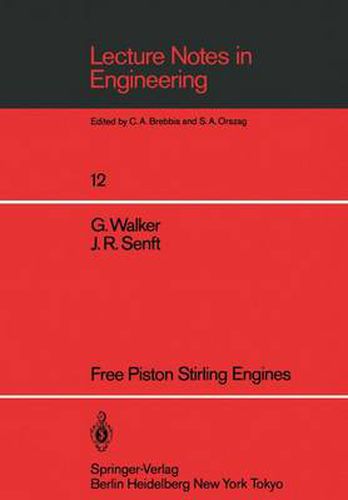Readings Newsletter
Become a Readings Member to make your shopping experience even easier.
Sign in or sign up for free!
You’re not far away from qualifying for FREE standard shipping within Australia
You’ve qualified for FREE standard shipping within Australia
The cart is loading…






This title is printed to order. This book may have been self-published. If so, we cannot guarantee the quality of the content. In the main most books will have gone through the editing process however some may not. We therefore suggest that you be aware of this before ordering this book. If in doubt check either the author or publisher’s details as we are unable to accept any returns unless they are faulty. Please contact us if you have any questions.
DEFINITION AND NOMENCLATURE A Stirling engine is a mechanical device which operates on a closed regenerative thermodynamic cycle with cyclic compression and expansion of the working fluid at different temperature levels. The flow of working fluid is controlled only by the internal volume changes, there are no valves and, overall, there is a net conversion of heat to work or vice-versa. This generalized definition embraces a large family of machines with different functions; characteristics and configurations. It includes both rotary and reciprocating systems utilizing mechanisms of varying complexity. It covers machines capable of operating as a prime mover or power system converting heat supplied at high tempera ture to output work and waste heat at a lower temperature. It also covers work-consuming machines used as refrigerating systems and heat pumps abstracting heat from a low temperature source and delivering this plus the heat equivalent of the work consumed to a higher tem perature. Finally it covers work-consuming devices used as pressure generators compressing a fluid from a low pressure to a higher pres sure. Very similar machines exist which operate on an open regen erative cycle where the flow of working fluid is controlled by valves. For convenience these may be called Ericsson engines but unfortunate ly the distinction is not widely established and regenerative machines of both types are frequently called ‘Stirling engines’.
$9.00 standard shipping within Australia
FREE standard shipping within Australia for orders over $100.00
Express & International shipping calculated at checkout
Stock availability can be subject to change without notice. We recommend calling the shop or contacting our online team to check availability of low stock items. Please see our Shopping Online page for more details.
This title is printed to order. This book may have been self-published. If so, we cannot guarantee the quality of the content. In the main most books will have gone through the editing process however some may not. We therefore suggest that you be aware of this before ordering this book. If in doubt check either the author or publisher’s details as we are unable to accept any returns unless they are faulty. Please contact us if you have any questions.
DEFINITION AND NOMENCLATURE A Stirling engine is a mechanical device which operates on a closed regenerative thermodynamic cycle with cyclic compression and expansion of the working fluid at different temperature levels. The flow of working fluid is controlled only by the internal volume changes, there are no valves and, overall, there is a net conversion of heat to work or vice-versa. This generalized definition embraces a large family of machines with different functions; characteristics and configurations. It includes both rotary and reciprocating systems utilizing mechanisms of varying complexity. It covers machines capable of operating as a prime mover or power system converting heat supplied at high tempera ture to output work and waste heat at a lower temperature. It also covers work-consuming machines used as refrigerating systems and heat pumps abstracting heat from a low temperature source and delivering this plus the heat equivalent of the work consumed to a higher tem perature. Finally it covers work-consuming devices used as pressure generators compressing a fluid from a low pressure to a higher pres sure. Very similar machines exist which operate on an open regen erative cycle where the flow of working fluid is controlled by valves. For convenience these may be called Ericsson engines but unfortunate ly the distinction is not widely established and regenerative machines of both types are frequently called ‘Stirling engines’.